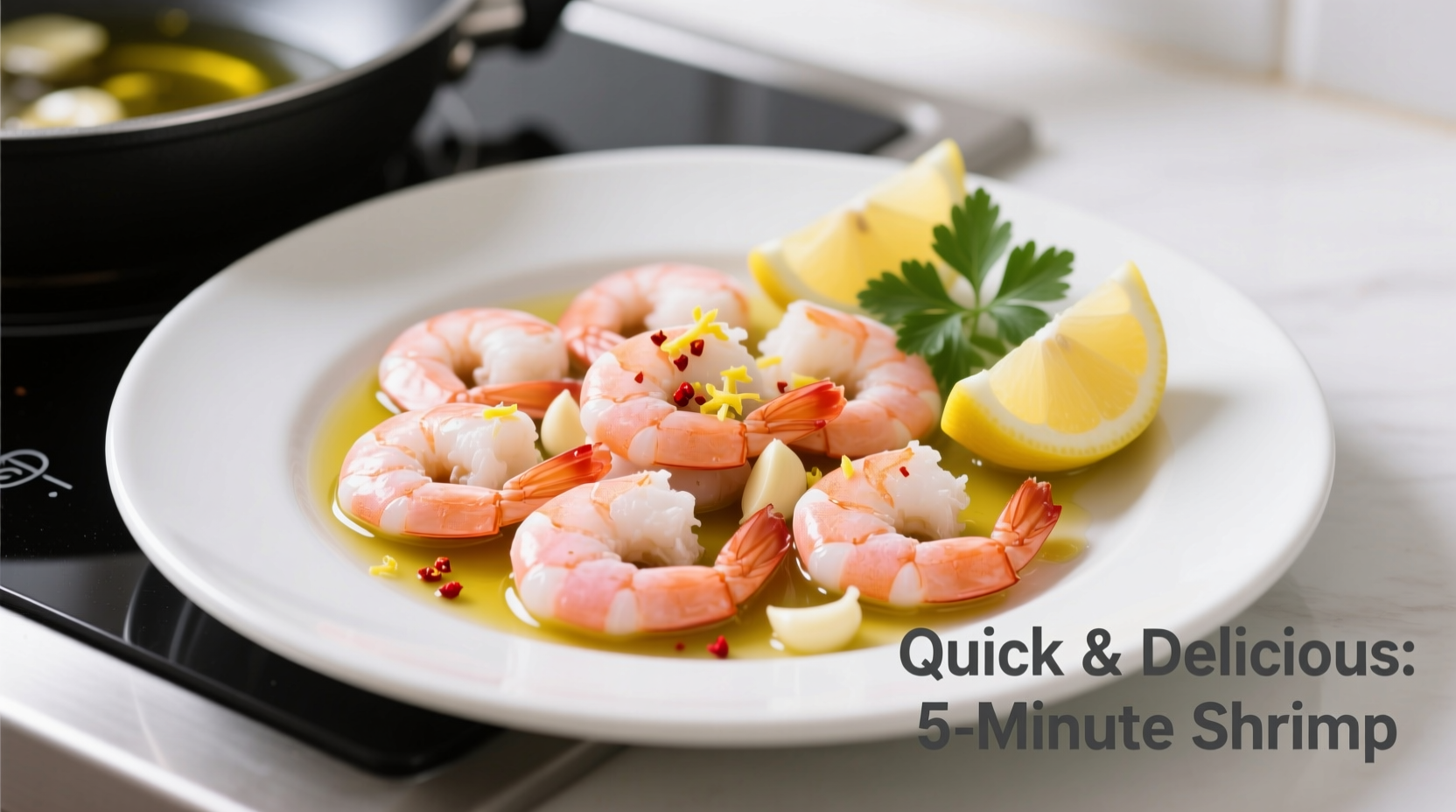Discover the most efficient techniques to transform frozen shrimp into restaurant-quality dishes in under 10 minutes. This guide eliminates the common mistake of thawing shrimp first, saving you time while preserving texture and flavor. Professional chefs consistently recommend cooking frozen shrimp directly for superior results when following precise timing guidelines.
Why Cooking Frozen Shrimp Directly Works Better
Contrary to popular belief, thawing shrimp before cooking often leads to watery, unevenly cooked results. The FDA's seafood safety guidelines confirm that cooking frozen shrimp properly maintains food safety while improving texture. When shrimp thaws improperly, ice crystals melt and create excess moisture that steams rather than sears the shrimp during cooking.
| Cooking Method | Thawed Shrimp Time | Frozen Shrimp Time | Texture Result |
|---|---|---|---|
| Pan-Searing | 1.5-2 minutes per side | 2-3 minutes per side | Firm, slightly caramelized |
| Boiling | 2 minutes | 3-4 minutes | Tender, not rubbery |
| Air Frying | 6-8 minutes | 8-10 minutes | Crisp exterior, juicy interior |
Essential Preparation Steps Before Cooking
Rinse frozen shrimp under cold water to remove ice crystals, then pat thoroughly dry with paper towels. This critical step prevents excess moisture from lowering your pan's temperature during cooking. According to the Culinary Institute of America's seafood guidelines, proper drying creates the ideal surface for searing. For best results, choose shrimp labeled "IQF" (Individually Quick Frozen), which indicates they were frozen separately at peak freshness.
Four Proven Cooking Methods for Frozen Shrimp
1. The Foolproof Pan-Searing Technique
Heat 1 tablespoon oil in a stainless steel skillet over medium-high heat until shimmering. Add shrimp in a single layer without crowding. Cook undisturbed for 2 minutes, then flip and cook 1-2 minutes more until opaque. The USDA recommends cooking shrimp to an internal temperature of 145°F (63°C), but visual cues are more reliable - shrimp are done when they form a loose "C" shape.
2. Quick Boiling Method for Salads and Pastas
Bring 4 cups salted water to rolling boil. Add frozen shrimp and cook exactly 3-4 minutes until they float and turn pink. Immediately transfer to ice water bath to stop cooking. This technique preserves the delicate texture while ensuring food safety, as confirmed by USDA food safety standards.
3. Air Fryer Approach for Hands-Off Cooking
Toss shrimp with 1 teaspoon oil and your preferred seasonings. Arrange in single layer in air fryer basket. Cook at 400°F (200°C) for 8-10 minutes, shaking basket halfway through. This method delivers restaurant-quality results with minimal effort, making it ideal for weeknight dinners.
4. Oven Roasting for Large Batches
Preheat oven to 425°F (220°C). Arrange shrimp on parchment-lined baking sheet. Drizzle with oil and season. Roast 10-12 minutes until opaque. This method works best for 16-20 count shrimp, as smaller varieties may overcook.

Critical Timing Guidelines to Prevent Rubbery Shrimp
Overcooking is the #1 mistake when preparing frozen shrimp. Frozen shrimp requires approximately 50% more cooking time than thawed, but still cooks faster than most proteins. Set a timer immediately after adding shrimp to heat. Shrimp are done when:
- They turn opaque pink with white flesh
- They form a loose "C" shape (tight "O" means overcooked)
- They reach 145°F internal temperature
Remove shrimp from heat source 5-10 seconds before they appear fully cooked, as residual heat will continue the cooking process.
Flavor Enhancement Strategies
Elevate your frozen shrimp with these professional techniques:
- Dry brine before cooking: Toss with 1/4 teaspoon salt per pound and refrigerate 15 minutes
- Acid balance: Finish with lemon or lime juice to cut richness
- Aromatic layering: Sear shrimp first, then build sauce in same pan
- Texture contrast: Add toasted breadcrumbs or chopped nuts before serving
Troubleshooting Common Issues
Rubbery texture: Usually caused by overcooking or improper thawing. Solution: Reduce cooking time by 30 seconds and skip thawing next time.
Watery results: Indicates insufficient drying before cooking. Solution: Pat shrimp thoroughly with paper towels after rinsing.
Uneven cooking: Results from overcrowding the pan. Solution: Cook in batches with adequate space between shrimp.
Storage and Reheating Guidelines
Cooked shrimp keeps refrigerated for 3-4 days. Reheat gently in a covered skillet over low heat with 1 tablespoon liquid (broth or water) for 2-3 minutes. Avoid microwaving, which creates uneven heating and rubbery texture. For best results, incorporate leftover shrimp into soups or pasta dishes rather than reheating plain.











 浙公网安备
33010002000092号
浙公网安备
33010002000092号 浙B2-20120091-4
浙B2-20120091-4